The Olympique de Marseille is not just a football club, it is a symbol of identity, passion and pride for an entire city and huge base of fans in France and around the world. Founded in 1899, OM has written some of the most intense and glorious pages in European football history. From its first national titles to winning the Champions League in 1993, through its iconic shirts and fiery rivalries, the Marseille club has become a living legend. In this journey, we will revisit its history, its unique identity, the battles that shaped its path and the players who left an eternal mark at the Vélodrome.
HISTORY OF OLYMPIQUE DE MARSEILLE
Olympique de Marseille (OM) was officially founded in 1899, although some argue the date is 1892. It was created by René Dufaure de Montmirail with the aim of forming a multi-sports club. While rugby and fencing were among the first sports practised, football soon became the soul of the club. The name “Olympique de Marseille” was inspired by the Greek Olympic ideal, in reference to the Greek origins of the city, highlighting its open and Mediterranean character. The Greek origins explains the club’s nicknames: Les Phocéens (The Phocaeans) and Les Olympiens (The Olympians).
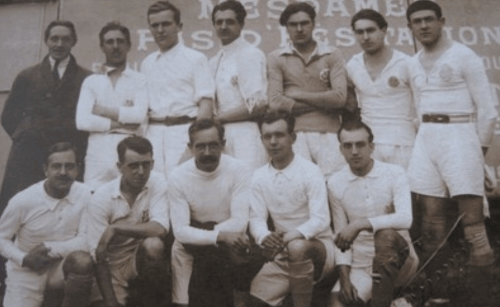
Olympique de Marseille 1919-1920
From the early decades, OM established itself as the city’s most popular club, closely linked to the working classes around the port The French Cup was the first competition in which it excelled. This competition was established in 1917, and the Marseille club won it in 1924, 1926 and 1927, beginning a special relationship with the tournament that it would repeat in the 1930s in 1935 and 1938. In 1937, the club won its first Ligue 1 title, the year in which the Stade Vélodrome, the club's home since then and the venue for the 1938 World Cup, was inaugurated.
It may come as a surprise to learn that in the 1930s, OM was already recruiting many of its big stars from abroad. Its ranks included Austrian, Hungarian and Moroccan players such as Larbi Ben Barek, who later joined Atlético Madrid, where he won two leagues, and Italians such as Mario Zatelli, who also became the club's coach years later.
In the 1940s, the team won another French Cup in 1943 and, after the Second World War, added another French championship title in 1948. From this period onwards, the club went into a tailspin and spent several years in the second division in the 1960s. But as has always been the case with this club, the French Cup came to its rescue and it lifted the title again in 1969.
The 1970s marked the beginning of a glorious era. With Yugoslavian Josip Skoblar as its star player and Europe's top scorer in 1971, Olympique de Marseille won the French Championship and went on to achieve a historic double, winning both the league and the cup in 1972. Also in that decade, Marseille established itself as one of the great clubs of the French Cup by retaining the title in 1976.
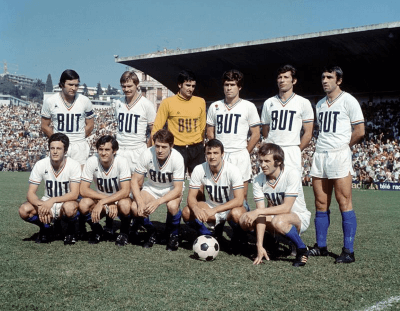
Olympique de Marseille 1971-1972
The definitive leap to legendary status came during the Tapie era (1986–1994). Under the presidency of businessman Bernard Tapie, OM dominated French football with four consecutive league titles (1989–1992). Its great journey during those years included reaching the Champions League final in 1991, which it lost on penalties to Red Star Belgrade. However, this season marked a turning point and elevated the club to the elite of European football with the great milestone of 26 May 1993, when it defeated Van Basten and Frank Rijkaard's Milan (1-0, goal by Basile Boli) to become the first French club to win the Champions League. It should be noted that it took more than 30 years for PSG to join them in 2025. This OM title remains the club's greatest source of pride. The players who achieved this feat remain in the memory of all the fans: Barthez, Abédi Pelé, Jean-Pierre Papin, Bokšić and Basile Boli himself, among others.
The following decades saw ups and downs: an administrative relegation in 1994, a slow rebuild in the 2000s, and a rebirth in 2010 under Didier Deschamps, winning Ligue 1 and the League Cup. In 2018, they reached the Europa League final, and in recent years have finished Ligue 1 runners-up in 2020, 2022 and 2025.
Honours:
• 1 Champions League (1993)
• 9 French Leagues (the first in 1937 and the last in 2010)
• 10 French Cups (the first in 1924 and the last in 1989)
• 3 League Cups (2010, 2011, 2012) a championship no longer taking place
• 3 French Super Cups (1971, 2010, 2011)
• 3 Europa League runners-up (1999, 2004, 2018)
More than a century on, OM remains a symbol of Mediterranean pride and passion, a club that reinvents itself without ever losing the loyalty of its fans.
IDENTITY, CREST AND KITS OF OM
Olympique de Marseille is not just a football club, it is a cultural symbol of the city and southern France. Its identity has always been linked to the Mediterranean character: passion, popular pride and a deep connection with port workers, sailors and labourers, representing all social classes in the city. For those unfamiliar with the city, it is important to note that the port of Marseille has always made the city a meeting point for cultures and communities.
OM Crest
From its early ornate designs at the end of the 19th century to today’s modern, minimalist version in sky blue and white, the crest reflects both tradition and modernity. The golden star added in 1993 reminds everyone of their Champions League triumph.
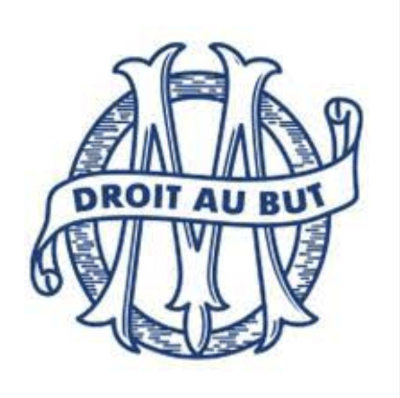
Olympique Marseille logo 1899
Core elements that have always remained:
• The interlaced “O” and “M”.
• The blue colour, taken from the city’s coat of arms.
Other elements have appeared and disappeared over time:
• The motto “Droit au but” (“Straight to the goal”), expressing their attacking spirit. This motto has accompanied the club since its foundation, when it absorbed Marseille Football Club.
• The star, after 1993 Champions League win..
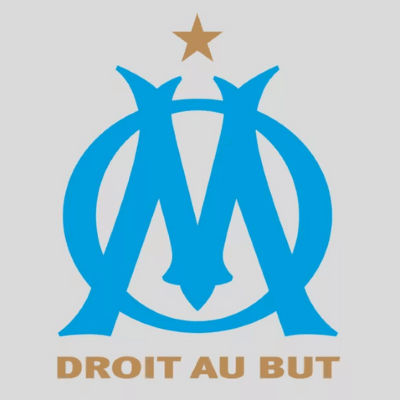
Olympique Marseille logo 2004
Olympique de Marseille Kits
The OM shirt has always been recognisable for its white colour for home matches; its first official kit from the late 1920s already featured this design, and over the decades it has become a hallmark of the club.
For away shirts, blue has been the colour of choice; the blue has changed over the seasons from sky blue, which has always been present in the club's history, to a darker blue.
In the 1970s, the team began to include the names or logos of sponsors in large, striking but simple lettering on the front of their classic white V-neck shirts. In the 1971-72 season, the tricolour of the French flag and the BUT sports magazine logo appeared on the collar trim.
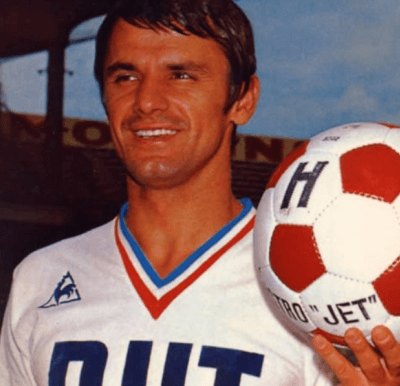
Josip Skoblar OM
From the 1980s and into the 1990s, coinciding with the Tapie era and European glory, the Adidas brand modernised the shirts with synthetic fabrics and more striking designs: diagonal stripes, gold accents and the unforgettable kit from the 1993 Champions League final.
Now in the 21st century, the club has maintained its tradition of innovation without losing its essence. We have seen shirts with urban inspirations, details almost always in the club's representative blue colour.
Olympique de Marseille 2011-2012 Adidas shirt
OM shirts suppliers
• Early 1970s: Le Coq Sportif.
• Mid-1970s to 2018: Adidas (the longest-serving).
• Since 2018: Puma.
The OM shirt is not just a uniform: it is a symbol of collective identity. For fans, wearing it means belonging to a family that goes beyond football, a community that shares history, passion and Marseillais pride.
RIVALRIES OF OLYMPIQUE DE MARSEILLE
Olympique de Marseille cannot be understood without its rivalries, which fuel the passion of its fans and shape its identity. Among them, one stands out above the rest: ‘Le Classique’ against Paris Saint-Germain, with the Stade Vélodrome as a witness.
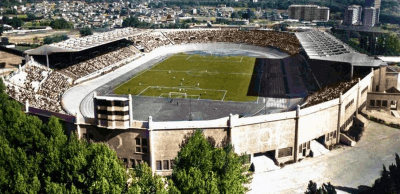
Vélodrome Stadium Olympique Marseille
The clash against PSG is much more than a football match: it is a cultural, social and geographical clash between Marseille, a popular, Mediterranean port city, and Paris, a centralist capital and symbol of economic and political power. Since the 1980s and early 1990s, when PSG emerged as a powerhouse, the matches have become veritable clashes of the titans. The stadiums vibrate, the tension spreads to the stands and each victory is celebrated like a title.
Another historic rivalry is with AS Saint-Étienne, the most successful club in France during the 1960s and 1970s. The Verts dominated that era, and their clashes with OM were decisive in establishing their hegemony in French football. Although it has lost some of its intensity over time, it still retains a special aura.
The regional rivalry with OGC Nice and AS Monaco also stands out. These are matches played by teams from the south of France, where geographical proximity adds an extra ingredient. The passion of the fans makes each match charged with atmosphere and territorial pride.
In short, OM experiences football as a story of intense rivalries, where each match is more than just three points: it is about defending a city, a lifestyle and a history against its great adversaries..
ICONIC OM PLAYERS
The greatness of Olympique de Marseille cannot be understood without remembering figures such as Gunnar Andersson, the club's top scorer, or other players who contributed their efforts to the club's rise to greatness. Among them are Marius Trésor, Chris Waddle, Abédi Pelé, Didier Deschamps, Manuel Amoros, Didier Drogba, Rudi Völler, Mamadou Niang, Fabien Barthez and other players who, at different times, left their indelible mark on the club's history.
We include reviews of four players, legends who represent the energy and history of Olympique de Marseille, both for their sporting impact and their mark on the fans and who defined eras at the Vélodrome:.
Josip Skoblar
Born in Privlaka, Yugoslavia (now Croatia) in 1941, he played for OM in two periods, 1966–1967 and 1969–1975. A lethal striker, he scored 176 goals in 286 matches. He was the top scorer in the French league for three consecutive seasons (1971-1973) and in 1971 he won the European Golden Boot with 44 goals. He led OM to the 1972 double (league and cup) and is still considered one of the best strikers the club has ever seen.

Jean Pierre Papin OM BALLON D'OR 1991
Jean-Pierre Papin
Born in Boulogne-sur-Mer, France, in 1963, he played for OM between 1986 and 1992. During six seasons, he scored around 180 goals, making him the club's second-highest scorer after Gunnar Anderssson, and became Ligue 1's top scorer in five consecutive seasons (between 1987-88 and 1991-92). He won four French leagues and was an essential part of the most feared attack in Europe. His greatest individual achievement was winning the Ballon d'Or in 1991, the only OM player to have done so.
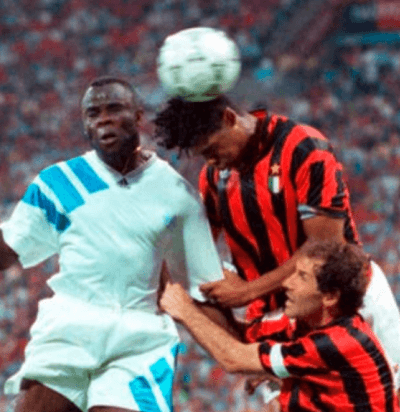
Basile Boli goal - Champions League Final 1993
Basile Boli
Born in Abidjan, Ivory Coast, in 1967, he joined OM in 1990 and played until 1994. A powerful centre-back, he will be forever remembered for his header in the 1993 Champions League final against Milan, which brought OM European glory. His tears at the end of the 1991 Champions League, when the team lost the final to Red Star Belgrade, are also remembered. His tears and his glory two years later are further proof of the greatness of football and how unpredictable this sport can be. With the Marseille club, he also won two league titles in 1991 and 1992 and became one of the most beloved heroes of the Vélodrome fans.
Steve Mandada OM goalkeeper
Steve Mandanda
Born in Kinshasa, Zaire (now the Democratic Republic of Congo) in 1985. Goalkeeper for Olympique de Marseille between 2007 and 2016, and then again between 2017 and 2022, becoming the player with the most appearances in the club's history.
Captain and undisputed leader for more than a decade, he won Ligue 1 in 2010, three consecutive League Cups (2010, 2011, 2012) and was instrumental in numerous European qualifications. His charisma and consistency earned him the nickname ‘Il Fenomeno’ among Marseille fans.
GET YOUR OM SHIRT
If you want to dress an OM shirt, here are some links to the original Adidas, which, as we have seen, has been the team's longest-standing kit supplier. These shirts are not very old, but bear in mind that one day they will be historic, so don't miss out on them.
OM 2012-2013 Shirt - InterSport Adidas
OM 2015-2016 Jersey - InterSport Adidas
OM 2010-2011 Shirt Goalkeeper - Betclic Adidas
OM 2011-2012 Jersey - Betclic Adidas
***
The history of Olympique de Marseille is the story of a club that has never stopped fighting and thrilling its fans; its motto, “Droit au but”, meaning “Straight to the goal”, says it all. From Skoblar’s goals to Deschamps’ leadership, from Boli’s strength to Papin’s magic, OM has built a legacy that transcends generations. Its crest, its colours and its triumphs are part of the collective memory of European football.
To talk about OM is to talk about passion, rivalry, glory and legend. More than a century after its birth, this club continues to write unforgettable chapters in the heart of the beautiful game.
 Retrofootball
Retrofootball  Belgium
Belgium  France
France  Germany
Germany  Italy
Italy  Portugal
Portugal  Spain
Spain  Switzerland
Switzerland  United Kingdom
United Kingdom  other countries
other countries  Retrorugby
Retrorugby 
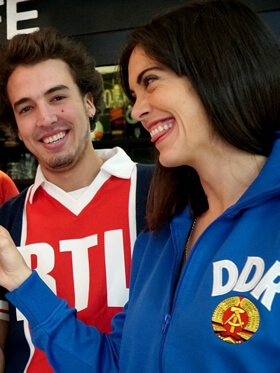
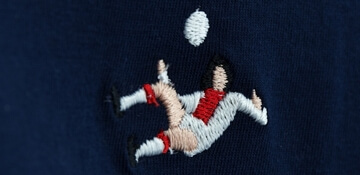
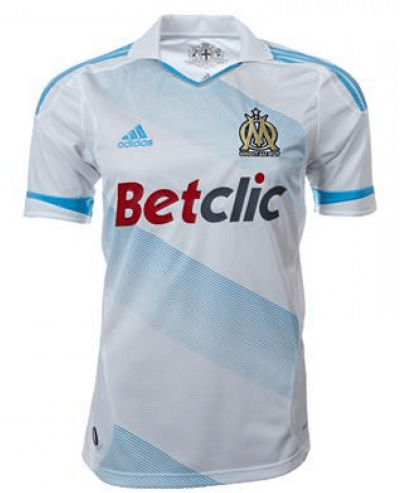
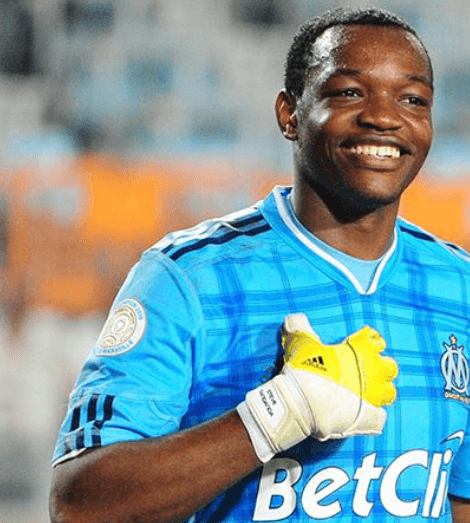


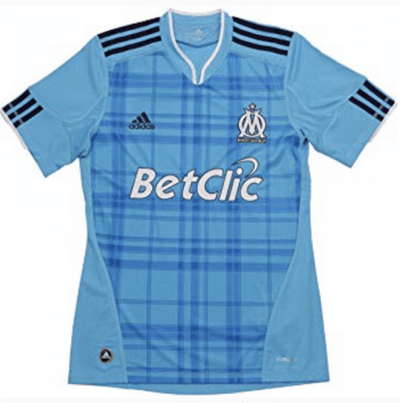




Post Comments